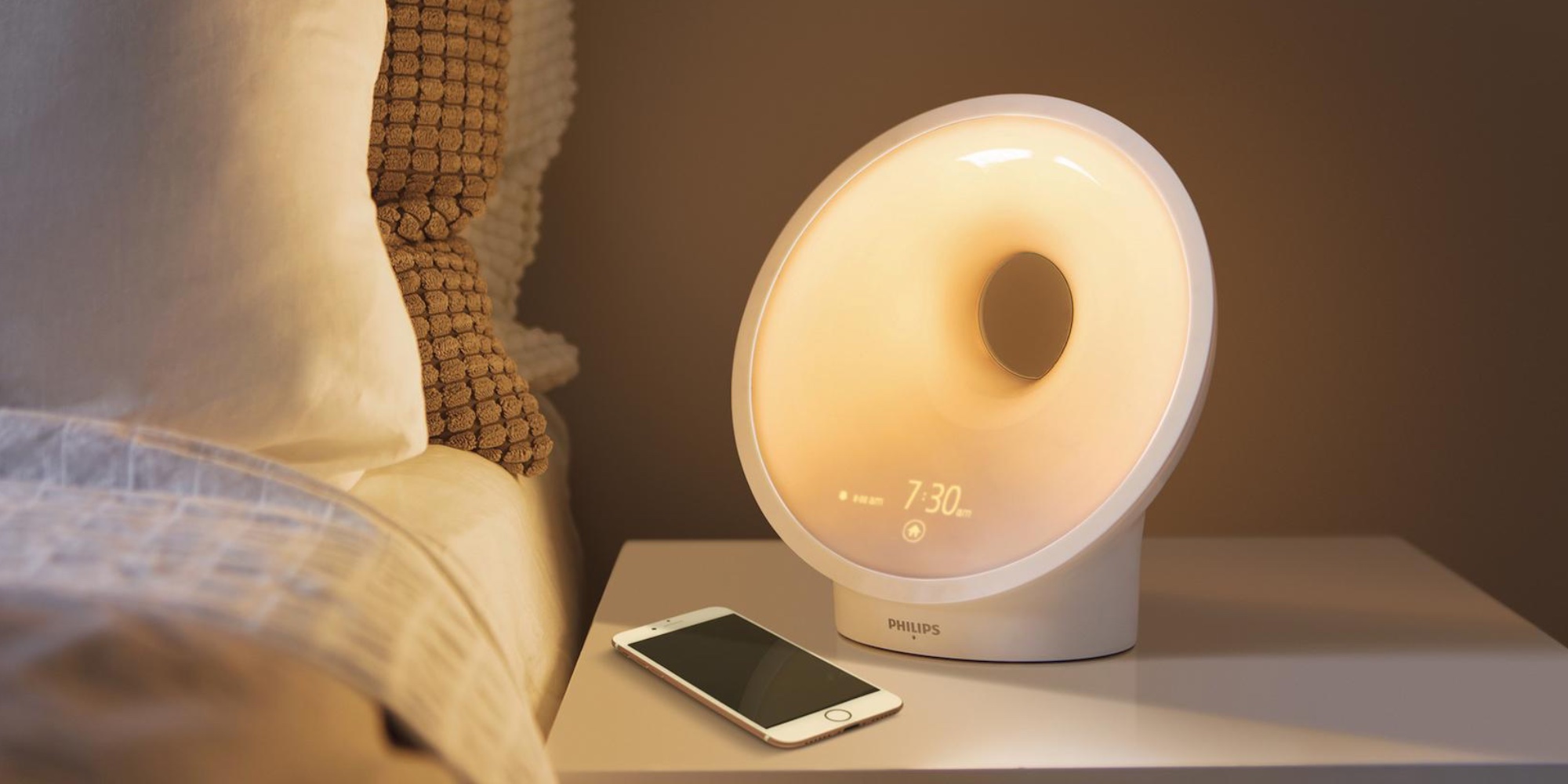
I had to practice a few times before I got it down.

While the unobtrusive buttons add to the sleek aesthetic, it can make setting the clock tricky.
SMARTSLEEP WAKE UP LIGHT SERIES
To set the clock, or the alarm, you have to tap a series of haptic buttons on the lower rim of the face. It also might not be ideal for couples who are both light sleepers but who wake at different times. So if you’re a heavy sleeper, the Philips Wake-up Light might not be enough to get your keister out of the covers. A herd of strobe-light carrying buffalo blowing air horns could thunder through our bedroom at 2am and he wouldn’t move a muscle. I’m the first in my family to hear squirrels running along the roof or one of my kids calling for help in the middle of the night. For me, gradually waking with the light is worth the price tag, but it might not be for everyone. The Philips Wake-up Light sells for $149 not peanuts, especially when most of us have alarms right there on our phones. There are some features that you should consider before getting the Philips Wake Up Light. Why The Philips Wake-up Light Might Not Be for You But I have a decently sized bedroom and a pretty big bedside table so that’s not a dealbreaker for me. The lamp is 7.83 x 5.75 x 7.56 inches, so it does take up a not-insignificant amount of real estate on my bedside table. My bedroom’s decor is cozy-minimalist, but the alarm would fit in with most decorating styles. Unlike the brown brick alarm clock from the ’80s (you know, the one everybody had), the Philips Wake-up Light is sleek and modern. And unlike blue lights from phones that can keep you up, the light emitted from this clock is soothing and calming. I usually set the timer for about 30 minutes (you can choose how long it takes to dim) and watch the light slowly fade to darkness. I don’t use it often, but on nights that I want to read a bit before bed instead of watching Outlander reruns, I hit the dimmer button, which essentially simulates a sunset. That’s right-this clock also has a sunset setting. Blindly scraping my hand along the carpet to find my phone (because it inevitably fell out of the bed part way through the night) and smash the off button to make the incessant beeping stop is anything but a relaxing way to start the day. Before getting the Philips light I used my phone’s alarm feature to rouse me. More importantly, the alarm is easy to turn off. There are buttons on either side of the clock for turning the alarm feature on once it’s programmed (you can set 2 different alarms). I’ve had the Philips Wake-up Light for a few years and it’s never failed to help me wake more gently, even when I’ve had to get up at an ungodly hour to catch a flight.

What I Like About the Philips Wake-up Lightīesides helping me give my tween some early am moral support, the Philips Wake-up Light has plenty of promising features. The light on its own is plenty to get me going, and I like a bit of quiet to ease into my day. You can pair the light with wake-up sounds-the usual suspects of chirping birds, gently crashing waves, and forest ambiance-or an FM radio station, but personally I don’t use them. By the time it’s gleaming white I’m already downstairs, fumbling with the coffee maker and feeding the dogs.

I usually start to blink my eyes open by the time the clock’s round face is alight with a warm orange radiance. The deep red glow isn’t supposed to shout “wake up!” Instead, it’s more of a “psst. The only time I’ve actually seen the red light is when I tested the clock while awake. At its brightest setting, the light is 300 lux. The lights range from deep red to warm white. It cycles through 20 brightness settings over 30 minutes.

Unlike someone (rudely) switching on an overhead light to wake you up, the clock’s light is more of a gentle easing. The Philips Wake-up Light alarm clock does pretty much what the name says: It simulates a sunrise to help you rise and shine.


 0 kommentar(er)
0 kommentar(er)
